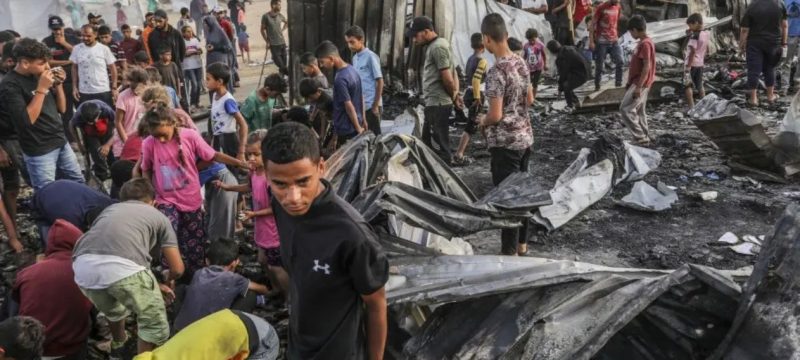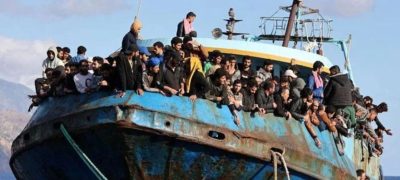At least 95 Palestinians, including women, children, and a journalist, lost their lives on Monday as Israeli airstrikes struck multiple civilian locations across the Gaza Strip. Among the targeted sites were a beachside café, a school sheltering displaced residents, and the courtyard of a hospital.
Gaza’s health ministry reported that 62 of the casualties occurred in Gaza City and the northern region of the territory. One of the deadliest incidents unfolded at Al-Baqa Café along Gaza’s northern coast, where 39 people, including journalist Ismail Abu Hatab, were killed. Eyewitnesses described the area as a peaceful space where families were celebrating a birthday when the attack struck unexpectedly.
Read more: Israeli Airstrikes Claim 14 More Lives in Gaza Amid Ongoing Conflict
“It was horrific — bodies torn apart,” said survivor Yahya Sharif. “There were no militants, no political activities — just families seeking a brief escape from war.”
Al Jazeera’s correspondent Hani Mahmoud, reporting from the scene, confirmed that the strike came without warning, leaving behind a massive crater and forcing rescuers to collect scattered human remains. The café had served as a safe haven for many who had already been displaced by previous attacks.
In a separate incident, Israeli warplanes bombed the Yafa School in Gaza City, which was acting as a temporary shelter for hundreds of displaced civilians. According to resident Hamada Abu Jaradeh, evacuees were given only five minutes to leave before the strike.
Central Gaza was also hit, with Israeli forces striking the courtyard of Al-Aqsa Hospital in Deir el-Balah. Verified footage from Al Jazeera revealed significant damage to tents and panic among civilians. Journalist Tareq Abu Azzoum, who was reporting nearby, stated it was the tenth attack on the hospital’s grounds since the war began.
“These repeated assaults on medical facilities are putting unbearable strain on Gaza’s crumbling health infrastructure,” said Abu Azzoum.
Gaza’s Government Media Office denounced the hospital strike, calling it a “systematic crime” against the health sector. In an official statement, officials accused Israel of intentionally bombing a tent sheltering displaced people within Al-Aqsa Martyrs Hospital’s premises, causing multiple injuries and threatening lives.
Further south in Khan Younis, at least 15 people were killed and over 50 wounded when an airstrike hit near an aid distribution center run by the Gaza Humanitarian Foundation (GHF), a group supported by the US and Israel. The GHF, active since late May in delivering limited aid, reported nearly 600 civilians killed at its facilities over the last month.
The Israeli military admitted that civilian casualties occurred in the aid strike and said operational protocols had since been revised. However, Israeli newspaper Haaretz revealed, citing unnamed soldiers, that orders were allegedly given to fire at unarmed civilians, raising serious concerns over excessive and deliberate use of force.
Residents of Khan Younis also reported renewed demolitions of homes and feared a fresh wave of ground invasions. In the northern Gaza area of Zeitoun — previously cleared by Israeli forces — families received new evacuation orders as tanks re-entered and airstrikes resumed. Four schools housing displaced families were bombed after evacuation warnings, killing at least 10 people in Zeitoun and 13 others southwest of Gaza City.
Despite global calls for a ceasefire, Gaza continues to witness widespread devastation. The United Nations and multiple human rights organizations have accused Israel of systematically attacking health centers, shelters, and aid hubs, warning of possible war crimes amid the ongoing 22-month-long military operation.
One Gaza City resident, 60-year-old Salah, shared his anguish: “They bomb schools, homes — it felt like earthquakes. The world talks about peace, but here, we only see destruction.”





